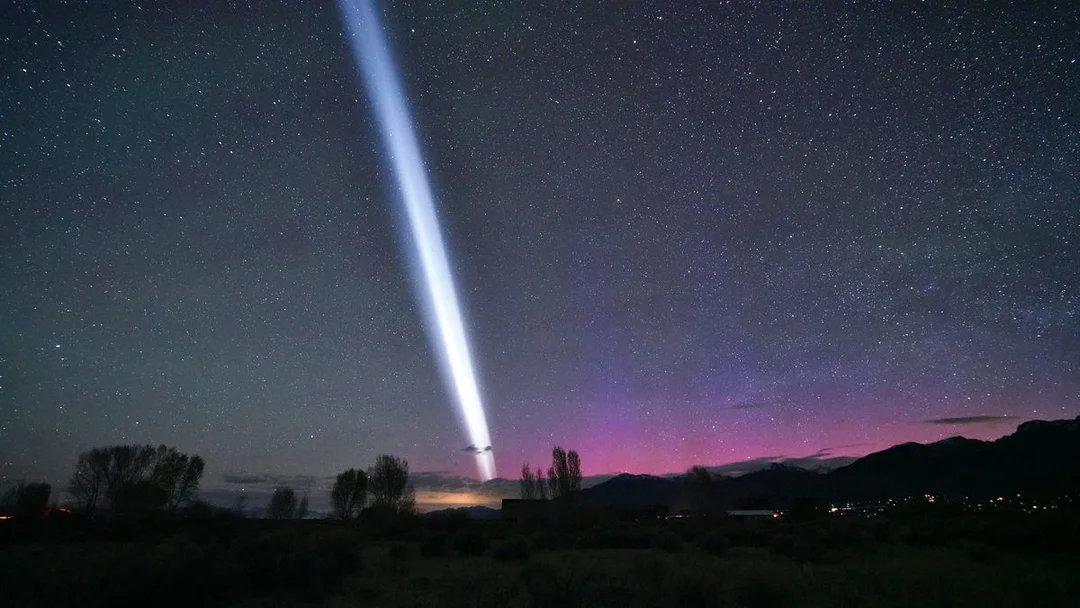
Mysterious White Streak Over US Skies: Chinese Rocket Fuel Dump Creates Aurora-Like Display
A spectacular and somewhat mysterious phenomenon recently graced the night skies over several U.S. states. A giant, bright, aurora-like white streak was observed, leaving many initially puzzled. Was it a new type of aurora? Or something else entirely? The answer, it turns out, lies in the activities of a Chinese rocket.
Reports poured in from Colorado, Idaho, Utah, Missouri, Nebraska, Washington, and New Mexico, all describing a luminous streak that lingered for about 10 minutes around 1:24 a.m. ET on Saturday, May 17. Some observers even captured stunning photographs and time-lapses of the event. Adding to the confusion, a G2-class geomagnetic storm was also underway, producing auroras visible as far south as New Mexico. Many initially mistook the streak for STEVE (Strong Thermal Emission Velocity Enhancement), a rare aurora-like phenomenon.

However, the true culprit was identified as China's Zhuque-2E rocket, launched from the Jiuquan Satellite Launch Center. According to Space News, the rocket successfully deployed six satellites before re-entering Earth's atmosphere. The intriguing streak wasn't a malfunction, but rather a deliberate “fuel dump” performed at an altitude of approximately 155 miles (250 kilometers), as confirmed by astronomer Jonathan McDowell.
The ejected fuel, a special hybrid of liquid oxygen and liquid methane known as "methalox," froze into tiny crystals. These crystals then reflected sunlight, creating the dazzling ribbon of light visible from the ground. This isn't the first time such an event has occurred. SpaceX's Falcon 9 rockets often create similar displays when dumping fuel before re-entry, resulting in luminous spirals and vortexes.
The Zhuque-2E rocket is notable for utilizing methane-based fuel, a cleaner and easier-to-store alternative to traditional hydrogen or kerosene. In fact, its predecessor, Zhuque-2, was the first methane-fueled rocket to reach LEO in July 2023. Methane could also potentially be produced on other planets, making it a valuable resource for future space exploration.

The next time you see an unusual streak in the night sky, remember it might not be aliens or a new atmospheric phenomenon. It could simply be a rocket venting fuel, providing a beautiful, albeit unexpected, spectacle.
Have you witnessed similar sightings? Share your experiences and thoughts in the comments below!